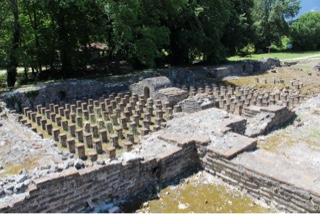I had a vague understanding of Prince Rupert's early years, having read Frank Kitson's biography. Although I note that was 18 years ago, so a new version is justified. His father's disasterous involvement in the Thirty Years War and the loss of the family lands, led Rupert into a military career from an early age. While he learned the basics, he also ended up a prisoner of the Emperor for three years.
The outbreak of the English Civil War found Rupert with his uncle King Charles. Although this wasn't a forgone conclusion - his older brother declared for Parliament in recognition of their support for the Palatine cause on the continent. Rupert became the Royalist General of Horse and his tactics, derived mainly from those of Gustavus Adolphus, gave the cavaliers an edge in the early battles. It was the discipline of Cromwell's Ironsides that turned the tide, most notably at Rupert's greatest failure, the Battle of Marston Moor.
The author made a deliberate decision only to use a third of the book on the Civil War period. This means we get an extensive description of the post-war period that I knew nothing about and was ignored by Kitson. Rupert became a admiral and commanded a flotilla, in what were little more than piratical operations to fund the Royalist cause in exile. They took him around Europe and the West Indies.
On the restoration of Charles II, Rupert was again given a naval role and fought in all three of the Anglo-Dutch Wars. He also established the Hudson Bay Company and he was the Constable of Windsor Castle, responsible for several of the halls we can see today. His interest in science and medicine was legendary.
If you are looking for a study of Prince Rupert's role in the Civil War, this isn't it. Instead we have a much more rounded picture of an exceptional character. Really good read.














































